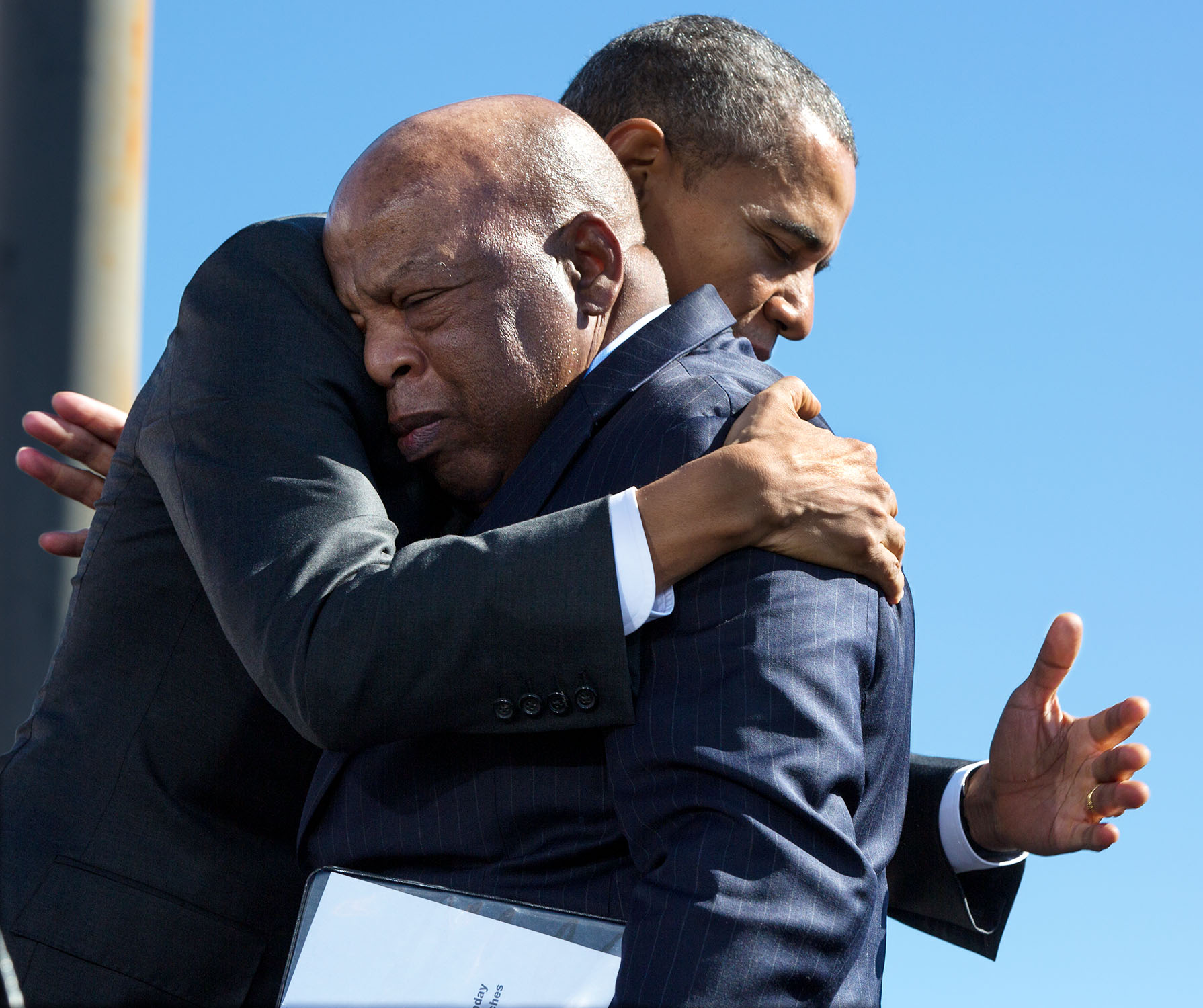BY ART GATTI | It was on a rainy May afternoon that we sat outside under umbrellas for Queens College’s Class of 2009 graduation ceremony. The two dozen of us in the first three drenched rows had graduated more than four decades earlier. We had no kids in this ceremony.
We were there as the ceremony’s “Guests of Honor” — a cadre of Sixties activists who’d served in civil rights and poverty programs, and the blanket honor was being bestowed upon us as a group. Queens College’s library had recently established one of the nation’s most extensive civil rights archives, so that had become the theme of the ceremony. And it was why our keynote speaker was there.
Addressing the drizzled-on throng was Congressman John Lewis — who did the best he could under the circumstances. And, as usual, he stirred the crowd for a full half hour with his profound recollections of the struggle, with inspirational challenges and gentle, humane humor.
When we finally got to escape indoors, we honorees retired to a small conference room in the college library where the true guest of honor, the iconic civil rights hero Lewis, would address our small party on more familiar terms. For John, it was an emotional reunion with so many who were present — because several of those fighters had joined him in the southern civil rights movement, worked alongside him during Freedom Summer, and risked their lives throughout the Sixties.
He’d be addressing us in the college library, with its clock tower dedicated to James Chaney, Michael Schwerner and Andrew Goodman — the latter a student at Queens College before being murdered, along with those two other good men, in the summer of 1964. John was home.
My own activism had been varied. It included building schools and work among the poor of Mexico, co-founding QCSDS (Queens College Students for a Democratic Society), organizing the earliest teach-ins for the antiwar movement, and spending five years in the northern civil rights movement. But my only forays down south had been with two projects, in 1964 and 1965, that rebuilt burnt, bombed-out Black churches, so fated because they were used during Freedom Summer.
John’s more personal talk to us was memorable — he had just eased his troubled heart by personally forgiving the man who had beaten him decades earlier, the man who’d made the news by coming to the congressman to ask forgiveness. His address to us was full of his characteristic take on Christian love, as well as his determination and advocacy for just change. And humor… .
He spoke of his early life on his family’s small farm, and how he knew as a child that he wanted to be a preacher.
“I used to stand in the farmyard,” he said, “and practice my oral skills. I would preach to the chickens.”
Years had changed our faces, all of us present on that afternoon. Bald and gray-bearded, we sat misty eyed and listened to this great man reveal new facets of his soul. I looked like all the others, nodded in appreciation along with everyone else.
Lewis remained emotional throughout the time he spoke, and when he concluded, he stepped from behind the dais and rushed toward the now-standing, applauding throng of us. Because of where I sat, and due to the angle of his approach, I realized I would be the first to…shake his hand?
No, not this man. He threw his arms around me in a tight hug, and, while I thought, “I am not worthy!” I let myself grow slack, returned the embrace and felt the love and power of the hug.
I carry with me at all times that surprising intimacy, that beautiful expression of camaraderie, and that remembered grin on my puss that erased my face — especially now, as the world celebrates his life. Where, we must wonder, will the next John Lewis arise?


Warmth emanates from Art Gatti’s piece on his hugging by John Lewis. Gatti’s fact-filled and heartwarming recollection of his own search for civil rights comes full circle with Lewis’s embrace. Thank you for publishing this personal yet universally understood slice of life.
Lewis’s humanity radiated in his smile. We were all lucky such a man existed.